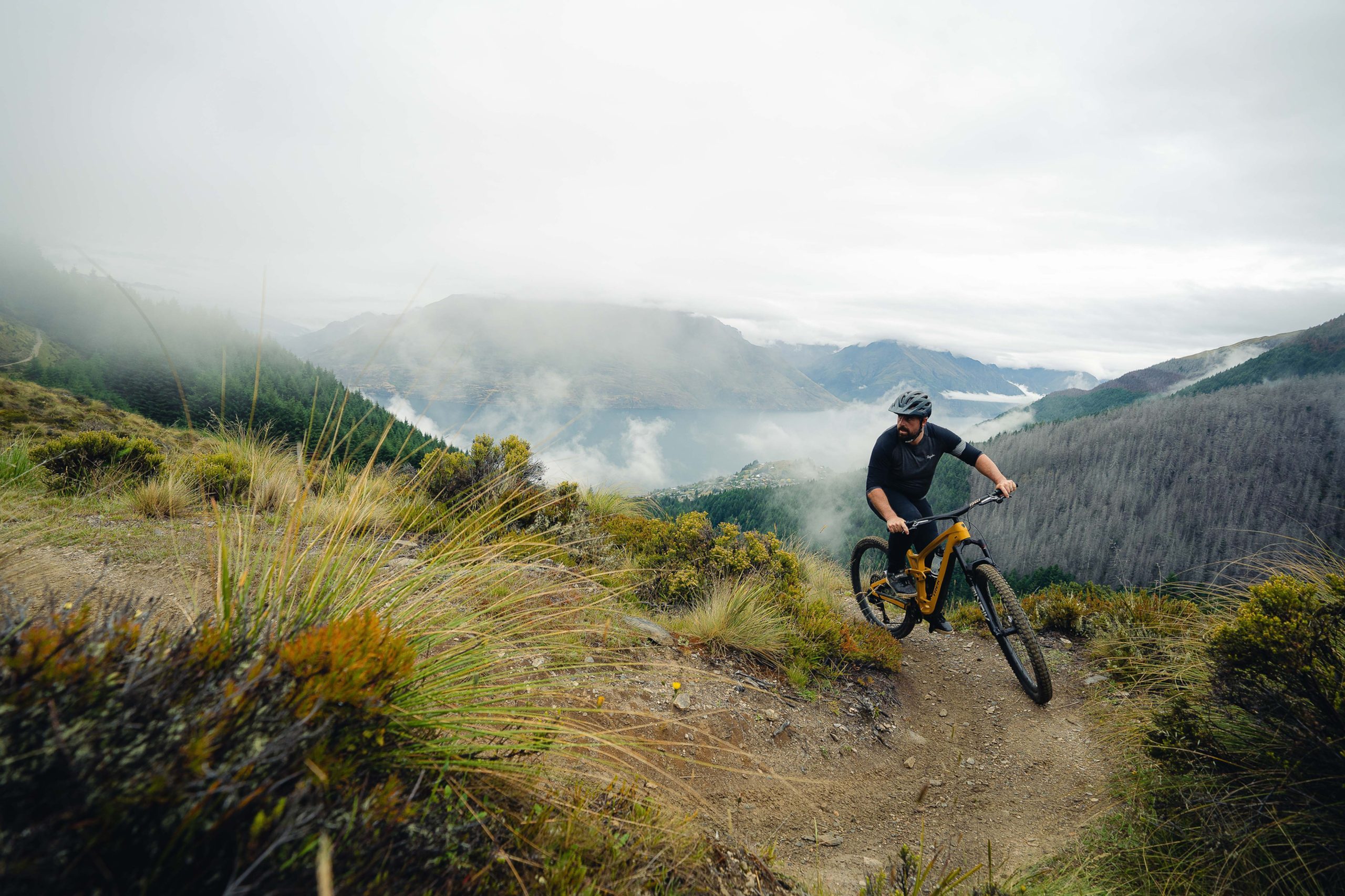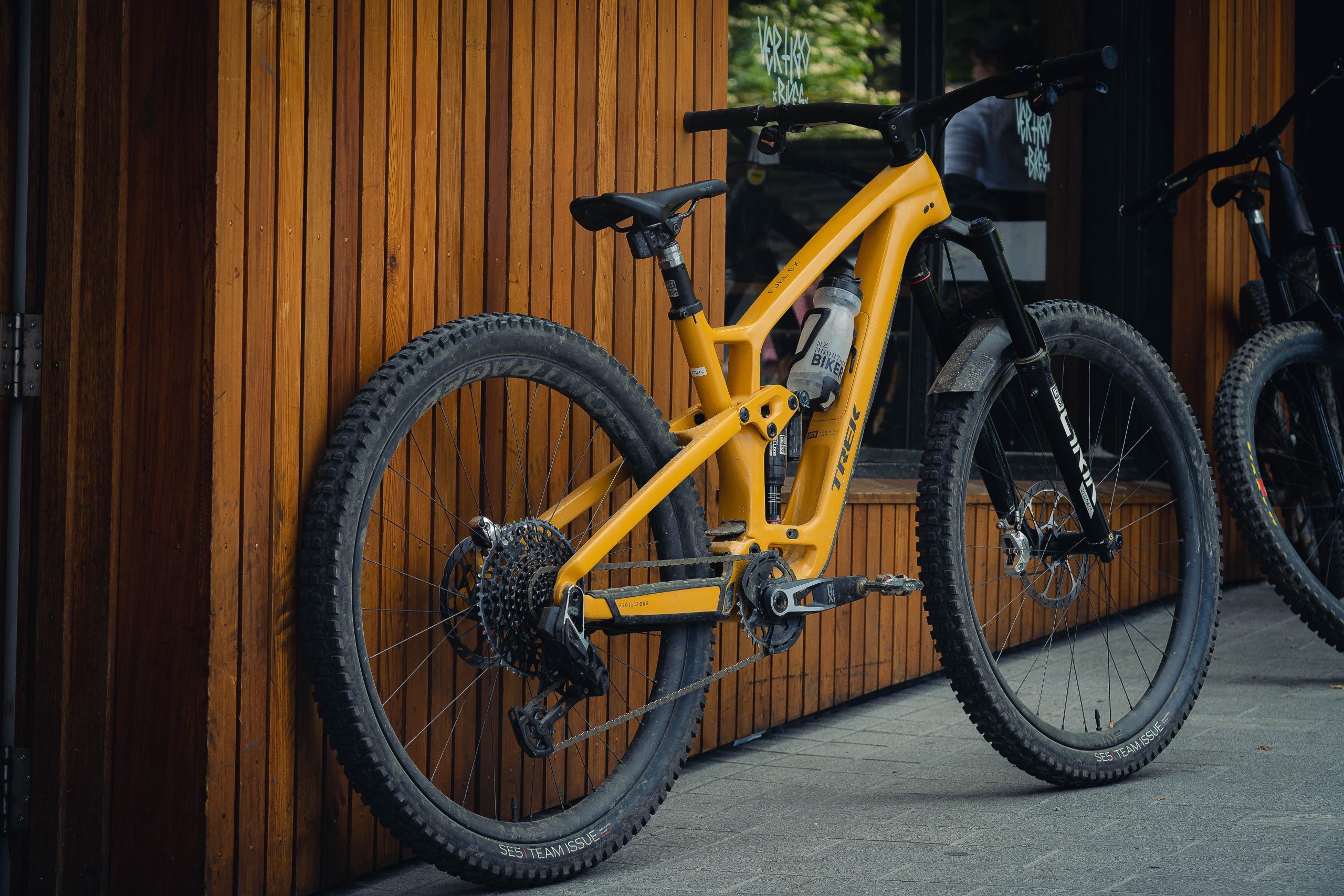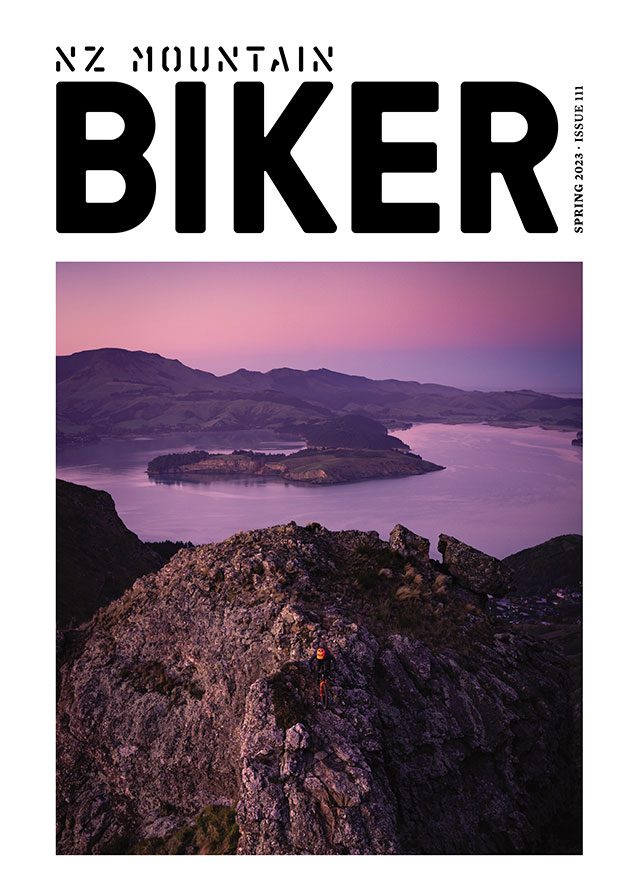In the bike world, we often hear about ‘incremental improvement’. Teams take a lot of things into consideration that seem trivial but, taken on the whole, they add up to the small advantages that make the difference between winning and losing.
The same sort of thing applies to the bikes that get trotted out each season.
The reality is, within most categories, the bikes available have been very good for a long time now. The stuff that gets bolted on has been equally good for just as long. That high level of functionality means incremental improvement is what we get.
In the case of the latest Trek Fuel EX, it is a revision of a model that has been a mainstay for trail riders for 17 years. My personal bike has been one of these things for the last two iterations, and I can attest that although my first one was a very good bike, the next was slightly better and the latest one is better again – for my purposes anyway.

I switched from more boutique brands for a variety of reasons. Practicality, to start with. The bike shop I work with in my day job is a Trek dealer and, yes, I admit I got a good deal on my first Trek. But the main thing that made me give the bike a go was a conversation I had with a friend who runs a high-end bike and sports retail store in Germany.
In his country, Trek is seen as a market-leading brand with the best technology, and customers pay a premium for the products. The retail environment in New Zealand is a bit different, and Trek is one of the brands that is available in the two big chains of retail stores. Not necessarily a bad thing, but it puts a brand in a different sort of light.
I looked at my mate’s input as a reinforcement of my decision to go mainstream, and ordered my first Fuel EX.
I rode that bike for two years, and had the same amount of strife as I had on the boutique brand bike I had been riding. That is, not much. Everything worked, and there were no big problems. So, I was a lot more confident upgrading when the next major model change came along.
My current bike has also given me two years of trouble-free operation, and it was a lesson in the benefits of going with a gigantic company’s offer. A full carbon frame, carbon rims, and decent pile of components for a very keen price.
When I got the chance to spend some time aboard the latest version, I felt well-qualified to feel out what I expected to be very small differences.
The improvements turned out to be more than incremental.
The frame is a thing of beauty – but that is in the eye of the beholder, of course. It has a very similar suspension system to the previous model, with ten millimetres more travel at both ends – they have upped the numbers to a very middle-of-the-pack level for a 29er trail bike: 140mm at the back and 150 in front.
The new model features more adjustability. Trek has offered their ‘Mino Link’ flip chip in the rear suspension for many years. That is an eccentric unit in the upper link of the rear suspension that lets a rider choose between a lower BB height – that makes the front end a fairly slack 64.5 degrees – or a higher BB and half a degree steeper head angle. In the 2023 model, they added a flip chip in the lower shock mount which gives you the option of a linear shock rate in the ‘Less’ setting or a noticeably more progressive rate in the ‘More’ setting. There is also provision for a headset providing a total of two degrees of adjustment.
The frame design makes a coil shock a possibility, and you can even mulletise the beast if you so desire.

The frame is definitely burly. There is a lot of material in the big tubes and tough-looking support struts in the well-reinforced design. The claimed weight of the Medium sized carbon example is 3.4kg. That translates to a complete bike weight of 14.15kg for this top-drawer model on review. That is not a super light bike these days, and the lower-specced versions can see an extra couple of kgs added on. Does that make much difference to the overall experience of the ride? Not in my opinion.
Heading out into the woods on the new bike, the first thing I noticed was the change of perspective from my cockpit point of view. My ‘old’ bike is a 2020 model, which has a 66 degree head angle and a 140mm fork. A degree and a half slacker, and 10mm more travel, doesn’t sound like much, but it puts that front wheel way out front. The effective seat tube angle has steepened by a whopping 2.5 degrees, to 77.5. The reach is stretched out by 5mm compared to the old machine, but that seat tube angle puts the rider over the centre of the bike.
The next thing I noticed was how spritely it felt. How a bike ‘feels’ is so subjective, I have always wondered why reviewers wax on about it, but now I am one. And how the bike feels is actually more interesting to me than all the numbers, especially the ones that refer to weight.
It feels light. It pedals incredibly well; the suspension platform is very stable with the air and compression settings set according to Trek’s online guide. It goes uphill better than anything in this reviewer’s experience – at least, that is the feeling I got from it. It isn’t a miracle machine, my Strava segments were still very average, but there were some PRs!
Same going down. The bike definitely transmits more chatter to the rider than my previous Fuels, but that could be down to the very stiff, unified bar/stem fitted to the model I had. Dropping a little tyre pressure settled it down a lot. I have not had great relationships with previous sets of Bontrager rubber, but the tyres fitted to this bike worked very well. They are big and heavy, and at a spongy 18psi in the front and 20 odd in the rear, they stuck to the dirt.
The extra ten millimetres of suspension travel doesn’t sound like much but, combined with the geometry tweaks, it really inspired confidence on downhill trails. I might not having been going any faster, but I felt great.
The down tube features the same storage facility that has been on the Fuel from 2020, with a cover that is secured by a lever tucked under the bottle cage, which bolts to the cover. There is enough room in the tube for a spare tube, a small pump, and a toolkit as long as everything is packed so it can’t rattle around. I have been paranoid about damaging the inside of the frame by having something loose floating around in there, so on my Fuel I have repurposed some neoprene things I had kicking around to contain my pump and a multitool. The bikes come with a long folding tube holder, which will hold a lightweight tube if you are patient and careful. It has a red tape on the end to haul it out with, and stowing the tube holder stops anything else form sliding down into the bottom of the tube and out of reach. The only downside to this baggage compartment is that the lid can rattle – it has the weight of a bottle attached to it, which probably doesn’t help. The test bike’s lid didn’t rattle at all. While we are on acoustics, the very generous chain stay protector on the new model quiets the back end of the bike down.
My take on the 2023 Fuel EX is very positive. I liked riding it. For everything I like to do, it was hard to imagine much improvement.
There is a range of build options that all share the same carbon frame.
The test sled was the 9.8 AXS model. It is listed at $12,699 – and that is a fairly eye-watering investment but, when you look at the tech you get, it is a way south of what you would need to spend on many more boutique brands with the same level of kit. Wireless shifting, carbon wheels and bars, Fox suspension.
There is an XTR version at $14,499, but the one that stands out for me is the XT model, at $9499.
Same carbon frame as the pricier bikes, unified carbon bar/stem, carbon Bontrager wheel set, Fox suspension, and the tried-and-true shifting and braking of Shimano XT. Very hard to beat that combo, and you get the back up of a large operation when it comes to the fairly unlikely prospect of a problem. Sometimes big is good.
WORDS: GAZ SULLIVAN
PHOTOGRAPHY: JAKE HOOD
DISTRIBUTOR: TREK NZ
RRP: XT: $9499 / 9.8 GX AXS: $12,699 / XTR: $14,499


